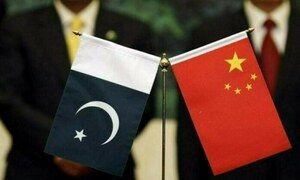LAHORE: To address the issue of circular debt, power sector experts have suggested converting circular debt into cheaper public debt by swapping Power Holding Ltd (PHL) debt with longer-term Islamic instruments, issuing sovereign bonds to settle CPPA payables and utilizing competitive auction pricing through the Pakistan Stock Exchange.
It may be noted that Pakistan’s power sector is facing a critical issue of circular debt. This debt has ballooned to over 2.26 trillion rupees, causing a significant burden on electricity consumers.
According to power sector experts, the main contributors to this debt are PHL, with 683 billion rupees, followed by Central Power Purchasing Agency (CPPA) payables, amounting to 1.06 trillion rupees and non-interest-bearing amounts, totaling 520 billion rupees.
They said the impact of this debt is substantial, with consumers paying an additional 3.23 rupees per kilowatt-hour (kWh) in financing costs, which increases to 3.81 rupees per kWh after taxes.
By converting circular debt into cheaper public debt, they said, Pakistan can reduce financing costs by up to 90 billion rupees annually, decrease electricity prices by 3.81 rupees per kWh and stimulate economic growth through increased electricity consumption.
It is worth noting that reforming the power sector’s cost-plus pricing regime and eliminating distortions in financing costs are crucial to resolving the circular debt issue and promoting sustainable economic growth. Also, the private sector is advocating for getting rid of Independent Power Producers (IPPs) and the government has already terminated agreements with five IPPs likely to benefit consumers to the tune of Rs440 billion in next five years.
Meanwhile, the government has also summoned another 18 IPPs to discuss converting their power plants from ‘take or pay’ to ‘take and pay’ mode to reduce circular debt. The government is expected to save Rs3 to Rs3.50 per unit from negotiations, Rs3.75 per unit from re-profiling, Rs0.65 per unit from electricity duty waiver and Rs0.16 per unit from PTV fee.
Copyright Business Recorder, 2024



















Comments
Comments are closed.